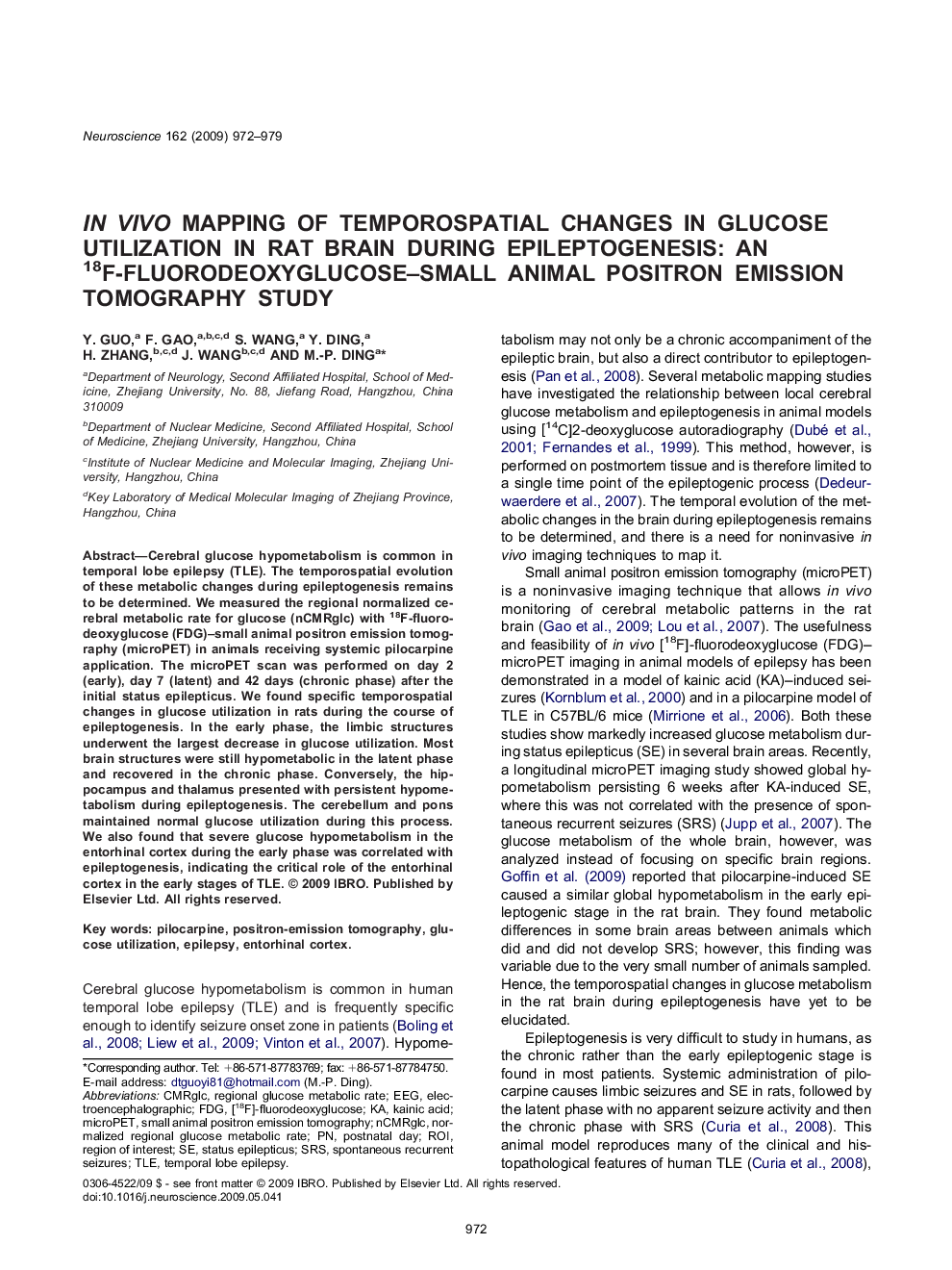| Article ID | Journal | Published Year | Pages | File Type |
|---|---|---|---|---|
| 4340219 | Neuroscience | 2009 | 8 Pages |
Cerebral glucose hypometabolism is common in temporal lobe epilepsy (TLE). The temporospatial evolution of these metabolic changes during epileptogenesis remains to be determined. We measured the regional normalized cerebral metabolic rate for glucose (nCMRglc) with 18F-fluorodeoxyglucose (FDG)–small animal positron emission tomography (microPET) in animals receiving systemic pilocarpine application. The microPET scan was performed on day 2 (early), day 7 (latent) and 42 days (chronic phase) after the initial status epilepticus. We found specific temporospatial changes in glucose utilization in rats during the course of epileptogenesis. In the early phase, the limbic structures underwent the largest decrease in glucose utilization. Most brain structures were still hypometabolic in the latent phase and recovered in the chronic phase. Conversely, the hippocampus and thalamus presented with persistent hypometabolism during epileptogenesis. The cerebellum and pons maintained normal glucose utilization during this process. We also found that severe glucose hypometabolism in the entorhinal cortex during the early phase was correlated with epileptogenesis, indicating the critical role of the entorhinal cortex in the early stages of TLE.
